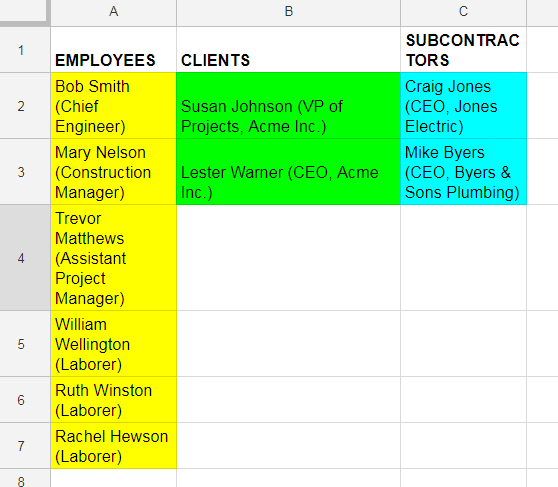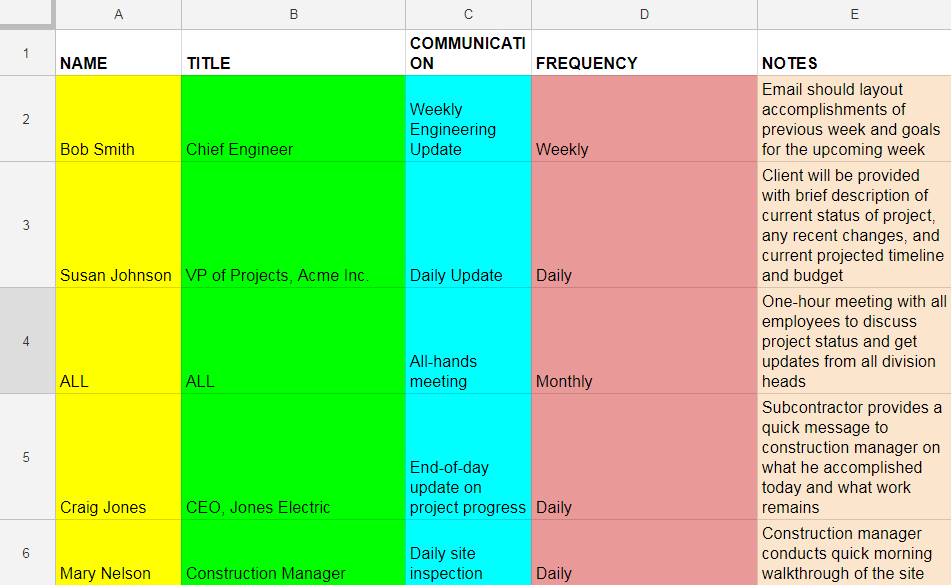How a Construction Communication Plan Can Help You Win Bids
Sometimes the simplest communication mistakes lead to catastrophic consequences.
Take the Mars Climate Orbiter, which NASA sunk more than $300 million into by the time it launched in the late 1990s. The spacecraft entered the Martian atmosphere too low and, poof, it was gone.
So what happened? Computer software on the ground was using a standard system of measurement, while the spacecraft itself was using the metric system. Oops.
Communication mistakes aren’t likely to have quite that huge of an effect on your construction business, but not having your clients, suppliers, subcontractors and employees on the same page has real consequences for your bottom line.
If you don’t have a construction communication plan in place, key stakeholders won’t be on the same page, resulting in major mistakes on the job site that will set your project back. This will put your budget and timeline in peril.
Firms must create a construction communication plan that utilizes construction software in order to increase their bid effectiveness and win rate by the next fiscal quarter. Here’s how to put your own plan in place.
1. Identify the Stakeholders
The first thing you need to lay out is who all the stakeholders are in your project and, therefore, who needs to be involved in the communication. This will be the lynchpin in any communications plan and will affect how you approach it.
So who qualifies as a stakeholder? Basically, it’s anyone who has an interest in what is going on in your construction project. That includes:
You
Your workers
Clients
Subcontractors
Anyone else who may become involved in the project
Sit down and create a complete list so there aren’t surprises later. Go through all of your communications for your last project—typically, you’ll come across a stakeholder you hadn’t thought of before.
Create a spreadsheet and separate these stakeholders into categories—this will be important later. Your engineers, plumbers, electricians and other workers will go in the “employees” category, while clients, suppliers and subcontractors will be categorized as such. Categorize any remaining stakeholders you have in a similar fashion, creating new categories as needed.
Take a look at the example below to get an idea of how it should look:

Example of a stakeholders spreadsheet
2. List All the Communication Items
Now it’s time to gather a list of “communication items,” which we will tie to specific stakeholders later.
A communication item is anything that needs to be communicated over the course of a project. That could be something like a major milestone, a problem on the job site or a daily inspection report. You should include every communication that affects the success of your project.
Some examples of communication items you should definitely track include the following:
Regular reports on the progress of the project
Status of the budget
Status of the project timeline
Accomplishments and milestones
Any project changes
Include not only regular items, such as weekly reports or milestone updates, but also unexpected items, or anything that might happen over the course of a project that could affect any of your stakeholders.
3. Decide on Communication Methods
Now that you’ve figured out exactly what your communication needs are, this is the ideal time to start thinking about what communication methods your organization will use. You are going to use multiple communication methods depending on the stakeholder and the communication item.
Here are some ideas for communication methods:
In-Person Meetings
Ideal for: Major milestones and project updates where multiple stakeholders need to be present.
How to record for later: Have someone take minutes so that what you discuss at the meeting can be reviewed at a later date (especially the next meeting to review your progress).
Ideal for: Daily or weekly updates involving one or many stakeholders.
How to record for later: Create a folder in your email inbox to save each of these updates for easy access later.
On-Site Discussions
Ideal for: Regular inspections involving one or two stakeholders.
How to record for later: Jot down quick notes about what you discuss after your in-person meetings and file them away for later.
Instant Messaging
Ideal for: Quick updates for individual stakeholders that require immediate action, such as notifications of problems on the job site.
How to record for later: Make sure the settings on your instant messaging application allow you to archives these messages so you can review at a later date if need be.
4. Develop a Communication Plan
Now’s the time to put it altogether, and this is where software will come in handy with features that include instant messaging, customized reports and mobile apps (which we’ll discuss in the next section). What you’ll want to do here is create a rough draft of your communication plan where you match up each stakeholder with a communication item.
Create a spreadsheet that lists:
The person
Their title
The stakeholder category
Communication item
Frequency of communication
Communication method for the communication
Any notes you want to include, such as exactly what information should be included in the communication.
Your spreadsheet should look something like the following:

Example of a communication plan
5. Find a Software Solution That Will Meet Your Needs
Laying out all this information is only half the battle. Now, you need a tool that can help you put it all together. We recommend you browse our construction software directory to find a solution that suits you.
To help get you started, here’s a look at some of the communication features offered by top-rated construction software options in our directory (to find a specific software option, check out our FrontRunners chart showing the highest-rated options and then browse our directory to investigate them further):
Direct Messaging
One software option allows users to directly message each other, automatically organizing correspondence by job and topic so you can refer to it at later dates and have documentation that the communication plan you’ve laid out was followed. The software offers push notifications to your phone, meaning that important messages immediately alert the relevant stakeholders.
Better Organization
Another software option emphasizes better client communication as a main goal, utilizing web, mobile, email and text so that everyone can see all communications about individual topics on one screen.
Sharing Customized Reports
Yet another software option generates reports based on an analysis of data generated by your firm over the course of a construction project, and these reports are useful in providing complete breakdowns to clients and other stakeholders. The software allows you to share these reports across teams so that everyone is on the same page.
Where to Go From Here
It may seem daunting, but putting together a construction communication plan that will make your business run better and win more bids is a lot simpler than you think. Here are a few quick steps you should take right now to get the ball rolling:
Set aside a couple hours next week to sit down and identify all stakeholders and communication items, and send the initial list to someone else in your organization to make sure you have identified everything.
Create an initial draft of your communication plan, and share it with your organization for feedback. Then set a deadline for finalizing it.
Give us a call at (855) 998-8505 so we can help you identify which software has features that would be best suited to tackling the communication challenges of your business.
NOTE: The content in this piece that provides opinions and points of view expressed by users does not represent the views of Software Advice.